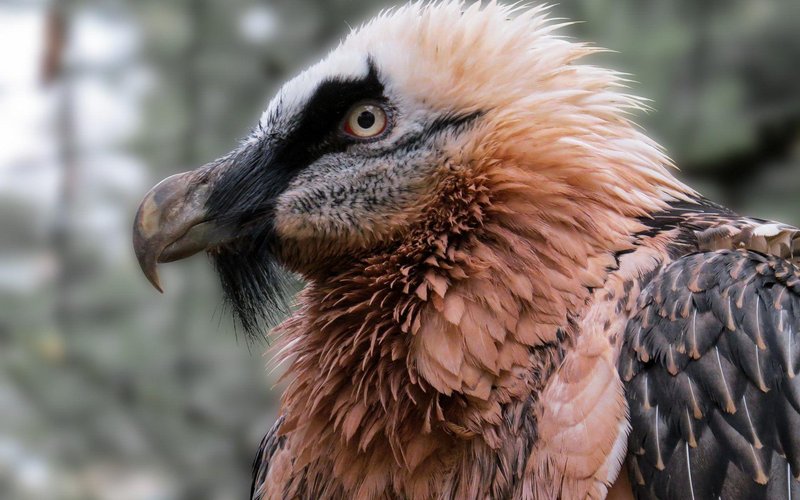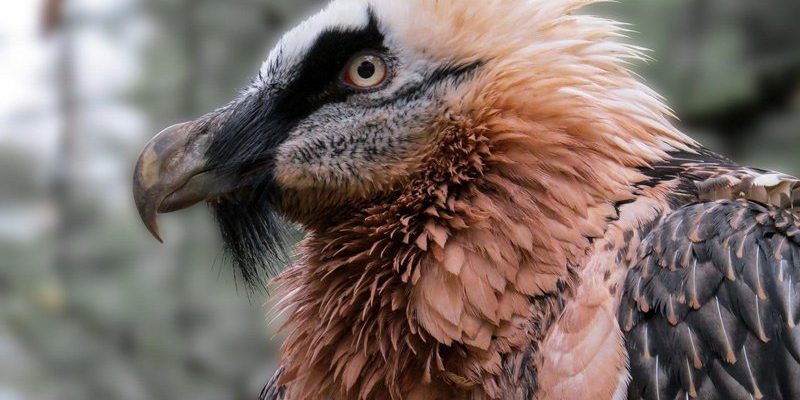
You might be wondering, “Can a bearded vulture actually pose a threat to humans?” The answer is a bit nuanced. While they aren’t known for being aggressive towards people, understanding their behavior and interactions with humans is essential. Let’s dive into what makes the bearded vulture unique and explore whether it can be dangerous to us.
Understanding the Bearded Vulture
Bearded vultures are remarkable birds, easily identifiable by their striking physical traits. With a wingspan that can reach over 9 feet and a distinctive reddish-brown plumage, they are a sight to behold. The feathers around their face give them that “bearded” look, which is a key feature of their identity.
These birds primarily inhabit mountainous areas, where they can glide effortlessly on thermal currents. They thrive in rugged terrains like the Himalayas, the Alps, and the Pyrenees. This habitat preference is not just about looks; the elevation allows them to spot carcasses from a distance, adapting their diet primarily to bones. They have a unique strategy for getting their food by dropping bones from impressive heights to shatter them open, revealing the nutrient-rich marrow inside.
Interestingly, the bearded vulture’s role in the ecosystem is vital. By consuming bones, they help in recycling nutrients, and their presence indicates a healthy ecosystem. It’s a beautiful circle of life in action, but the question remains: how do they interact with humans amidst this dance of survival?
Typical Behavior and Temperament
Bearded vultures are not the aggressive type you might associate with danger. Generally, they are solitary or form small family groups. They tend to keep their distance from humans and are more interested in their food and territory than in confrontation. The reality is that these birds are quite shy compared to other scavengers.
Most of their interactions with humans occur in areas where people might encroach on their habitat. For example, hikers in mountainous regions or villagers living nearby might catch a glimpse of these majestic birds soaring overhead. Here’s the thing: when humans respect their space, bearded vultures are more likely to ignore them.
Of course, it’s essential to remember that all wild animals can act unpredictably if they feel threatened. That said, there are few documented cases of bearded vultures attacking humans. They are more inclined to fly away than confront someone who gets too close. So, if you come across one, enjoy the moment but keep your distance.
Can Bearded Vultures Attack Humans? The Evidence
While it’s rare, there are a few recorded instances where bearded vultures have shown aggression toward humans. Most of these cases involve birds defending their nests or young chicks. Like any animal, a bearded vulture might act defensively if it perceives a threat. This is typical behavior among wildlife; after all, we’d all want to protect our families!
In a few isolated situations, there have been reports of these birds swooping down to investigate or even dive-bombing people who get too close to their nests. It’s important to note that these attacks are not a sign that the birds are out to get humans. Instead, they reflect an instinctual behavior to protect their territory.
You may also find that bearded vultures are more curious than aggressive. They’ll often watch humans from a distance, assessing any potential threat. If you’re hiking or observing them, take care to respect their space, and you should have a peaceful encounter.
Bearded Vulture Habitat and Human Encroachment
As we continue to explore our interactions with bearded vultures, understanding their habitat is crucial. Bearded vultures thrive in remote mountainous areas, often in places that are difficult for humans to reach. However, with the rise of tourism and habitat loss due to development, these birds are increasingly coming into contact with people.
Human encroachment can be problematic for many species, including the bearded vulture. As we build roads, houses, and resorts in their habitats, we increase the chances of upsetting their natural behaviors. For instance, when a nesting pair is disturbed by hikers or construction, they might abandon their young, leading to population declines.
Moreover, as people feed these birds out of curiosity or to attract them for photography, it can lead them to become dependent on human food sources, which is not healthy. Responsible wildlife observation is key to ensuring both humans and bearded vultures can coexist peacefully.
How to Safely Observe Bearded Vultures
If you’re lucky enough to spot a bearded vulture in the wild, it’s crucial to observe them respectfully and safely. Here are some tips to ensure a positive experience for both you and the bird:
- Keep your distance: Use binoculars or a camera with a zoom lens to observe them without getting too close.
- Stay quiet: Loud noises can startle birds and disrupt their natural behaviors, so keep the volume down while enjoying their presence.
- Avoid nesting areas: If you know a pair is nesting, steer clear of those spots to avoid stressing the birds.
- Follow local guidelines: Always respect local wildlife regulations and recommendations for observing and interacting with wildlife.
By following these simple guidelines, you can appreciate the beauty of bearded vultures without putting them at risk or creating a potentially dangerous situation.
Conservation and the Future of Bearded Vultures
Despite their fascinating attributes, bearded vultures face a number of challenges that threaten their survival. Habitat destruction from human activity is a significant concern, as is the poisoning of carrion sources due to agricultural practices. Conservation efforts are underway in many regions to protect these birds and their habitats.
Organizations and local governments are working together to create protected areas, raise awareness about the importance of their role in the ecosystem, and educate the public on how to interact safely with wildlife. By supporting conservation initiatives and respecting the habitats of bearded vultures, people can help ensure these birds continue to thrive for generations to come.
Here’s the reality: while the bearded vulture isn’t out to get you, it’s vital to appreciate them from afar. Respect their space, and you can enjoy their beauty without any risk.
In conclusion, the bearded vulture is a magnificent bird that plays a key role in its ecosystem. While they can exhibit defensive behaviors when threatened, they are not inherently dangerous to humans. By understanding their nature and respecting their habitats, we can coexist peacefully and appreciate these unique creatures.
So, the next time you find yourself in a mountainous region and spot a bearded vulture soaring overhead, remember to take a step back, observe quietly, and marvel at the wonders of nature. These birds are more than just scavengers; they are part of a delicate balance in our ecosystem, and with a little respect, we can ensure they continue to thrive.

